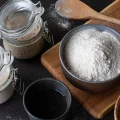Bread is a major part of the modern diet. It’s a staple in our everyday lives and many people are eating some type of bread with most of their meals. Years ago, when I realized that bread was the actually culprit for my flatulence and digestive problems I started to investigate if there is a way to keep bread in my diet.
There were many choices in bakeries and markets but none of them give any results for my digestion due to their poor ingredient choices & baking practices. I decided to make best bread possible at home and the following can serve you for guide to make better health choices for you, your family and friends.
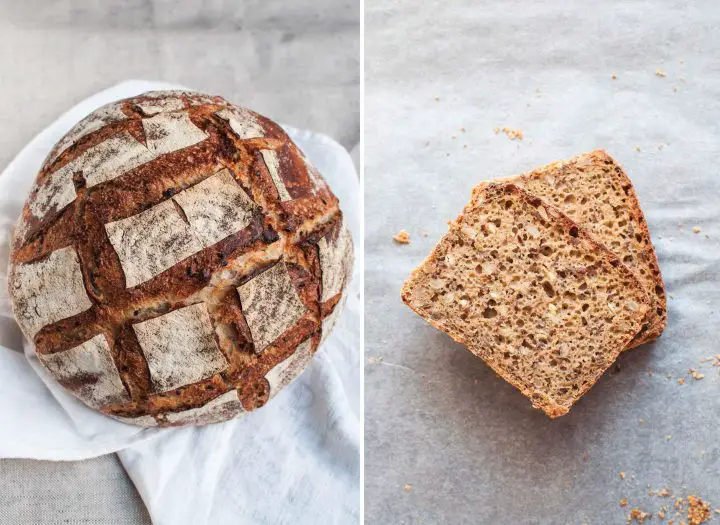
Left: 100% spelt sourdough bread. Right: 100% einkorn sourdough bread.
1. Use only organic flours & grains
I consistently observe that my sourdough starter is doing best, when flour is organic, free of any pesticides, preferably produced biodynamic, clean and freshly milled. So, your starter is great indicator how quality is your flour and how stressed the plant was while growing.
I tested majority of conventional store bought flours that I could get. In some cases, flour was so weak in life/processed that was even not possible to make sourdough starter.
2. Source ancient grains
Modern wheat has been heavily hybridized, with the goal of increasing yields, warding off plant disease and pests, and being more resistant to certain weather conditions.
Hybridization of plants has been practiced for centuries and the truth is that most of the plant foods we consume everyday are hybridized in some form or fashion. Hybridization typically occurs through selection of desirable and inheritable characteristics that are either dominant or recessive genetic traits. In the case of modern wheat, as a result of hybridization the gluten structure has changed significantly, which has conceivably caused the rising number of people with intolerance to gluten.
Good examples of ancient grains are einkorn, khorasan, emmer (or farro – an ancient strain of wheat) or spelt. These grain are naturally lower in gluten content.
Here you can find the recipe for 100% einkorn sourdough bread and spelt sourdough lemon poppy seed bread cake.
Einkorn wheat (Triticum monococcum) is one of the first forms of wheat cultivated by humans. As spelt, einkorn is also a hulled wheat and thus requires an extra processing step which is called threshing and in which the hulls are removed. The hull has an important role: it can protect the grain from stray chemical contamination and insects making it an easier grain to grow organically.
3. Use sourdough starter to leaven the bread
Using sourdough starter help you to avoid potentially harmful commercial yeasts. Microorganisms in your starter thrive in high quality flours, producing vitamins and converting starches and micronutrients in your flour into more bioavailable and nutritious food for you.
Even when you don’t have an option to use the best flour possible, studies are showing that pesticide residues are significantly reduced in sourdough. For example, one study found that pesticide concentration was reduced by 42% by lactic acid bacteria. Thus the lactic acid bacteria in sourdough bread can protect you to some degree against pesticide exposure.
4. Keep it simple
High fructose corn syrup, soybean oil, xanthan gum, maltodextrin, calcium propionate, cellulose fiber, bleach and other chemical dough conditioners, added sugars, artificial flavorings or coloring and GMOs and the bread has no flavor and harmful effects to our bodies.
Remember, it only takes three ingredients to make the simplest bread: flour, water and salt. And what is more, using natural ingredient brings more vibrancy and joy to our daily lives.
5. Ferment your dough
No grain is coming without its natural components like phytic acid. Phytic acid is the principal storage form of phosphorus in many plant tissues, especially in the bran portion of the grain and other seeds. It contains mineral phosphorus tightly bound in a snow-flake like molecule. However, present in grains in such form is unusable for our bodies and phosphorus is a vital mineral for strong bones and good health.
In humans and animals with one stomach, the phosphorus is not readily bioavailable. The “arms” of phytic acid molecule also bind with other minerals such as calcium, magnesium, iron and zinc making them unavailable to you as well. Phytic acid not only grabs onto important minerals, it also inhibits enzymes that we need to digest our food (pepsin, amylase, trypsin).
There is a solution for this.
The key to neutralize the effects of phytic acid is enzyme that breaks down phytic acid and liberates the nutrients. This enzyme is called phytase and co-exists in plant foods that contains phytic acid. The solution to activate the phytase enzyme and neutralize phytic acid in grains is lactic-acid fermentation.

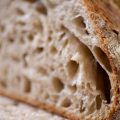
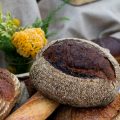
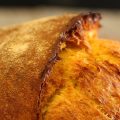
![What Soup Goes Well With Sourdough Bread [15 Best Soups To Try] 5 What soup goes well with sourdough bread [15 best soups to try]](https://www.mydailysourdoughbread.com/wp-content/uploads/2023/06/soups-with-sourdough-120x120.jpg)
